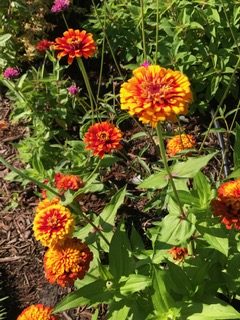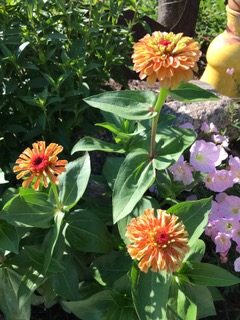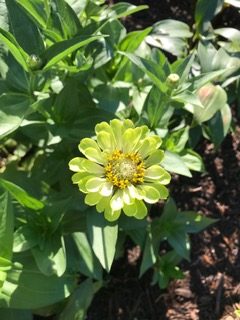Zinnias are a low maintenance, colorful annual that is a great addition to the flower garden. When growing by seed after danger of frost, sow the seeds directly into the flower bed as developing roots do not like to be disturbed. Zinnias can be transplanted but use care to get the entire root area.
Zinnias should have some space between the plants for air circulation. Powdery mildew is a disease that can attack zinnias if they are planted too close. Zinnias should also be watered at the base in the early morning so that foliage has a chance to dry out.
Zinnias come in a wide range of colors and heights. They are in the daisy family and can range in size from 6-inches to 4-feet tall. There are single, double, and semi-double bloom zinnias. They also come in various shapes, including beehive, button, and cactus.
Depending on the size, zinnias can be used in the front or back of the garden. They can be grown in containers or massed for season-long color. Plant in average, well-drained garden soil in full sun. Deadhead to encourage more blooms, but be sure to leave on some seed heads for the birds.
There are multiple cultivars in the zinnia family. The hybrid ‘Profusion’ is a cross between Zinnia angustifolia and Zinnia elegans. This cultivar has large flowers and is disease resistant. It is also drought, heat, and humidity tolerant. Zinnias are usually not bothered by deer or rabbits.
Zinnia seeds and plants are readily available at local garden centers. Be sure to pick up some seeds to add to your garden next spring. www.plants.ces.NCSU.edu
Photos and information by Jeanne Pavero
North Carolina Extension Gardener Plant Toolbox




